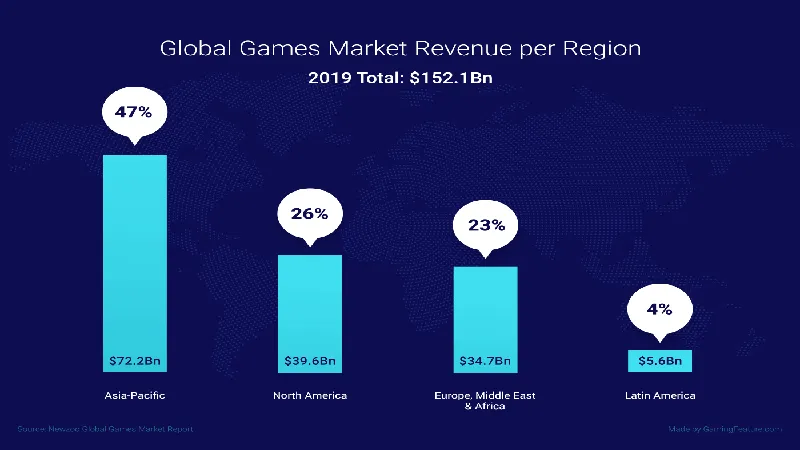As the gaming landscape evolves, industry analysts are sounding the alarm on the future growth of this vibrant sector. According to MIDiA’s Global Games Forecast report for 2025 to 2031, the once-explosive expansion of the games industry is expected to plateau, urging publishers to recalibrate their growth expectations. With software revenues projected to reach $203.2 billion in 2025 and only marginally rising to $237.0 billion by 2031, the report highlights a stagnation influenced by economic pressures. This shifting dynamic compels developers to rethink their strategies, focusing on untapped markets and innovative content to engage players in an increasingly mature market.
| Category | Details |
|---|---|
| Industry Growth | Growth potential of the games industry is diminishing; double-digit growth is unlikely. |
| Revenue Forecast (2025) | $203.2 billion in software revenues. |
| Revenue Forecast (2031) | $237.0 billion in software revenues. |
| Impact of Inflation | Stagnant growth rate influenced by inflation. |
| Hardware Revenue (2025) | Expected to increase by 8.4% to $20.6 billion due to Switch 2. |
| Major Titles Impact | Titles like GTA VI and Switch 2 will mainly benefit their developers (Nintendo, Take-Two). |
| Live-Service Games | Lack of growth; many have been discontinued due to low user interest. |
| Subscription Models | Services like PlayStation Plus and Xbox Game Pass may face slowdowns. |
| Market Phase | Gaming market is in a maturity phase; developers should target underserved markets. |
| Development Focus | Shift towards creating single-player premium titles for better player engagement. |
| Advice for Developers | Embrace reduced waste and innovate based on data instead of chasing trends. |
The Changing Landscape of the Gaming Industry
The gaming industry is like a big roller coaster, but right now, it seems to be slowing down. A recent report says that the excitement of double-digit growth is fading, and the market might not grow as fast as it used to. By 2025, the industry is expected to make about $203.2 billion, which sounds great, but it’s not the big jump everyone was hoping for. This slower growth means game makers need to adjust their expectations to avoid feeling disappointed later.
As gamers, we might wonder why this is happening. One reason is inflation, which affects how much money people have to spend. While exciting new games and consoles, like the Nintendo Switch 2, can boost sales, they alone won’t keep the industry soaring. The growth rate is becoming more stable, and this is a sign that the gaming market is maturing. Developers will need to think carefully about their next moves to stay successful in this new environment.
Frequently Asked Questions
What does the MIDiA report say about the growth of the gaming industry?
The MIDiA report indicates that the gaming industry’s growth is slowing, predicting software revenues of $203.2 billion in 2025 and $237 billion by 2031.
How will the launch of the Switch 2 affect hardware revenue?
The Switch 2 is expected to increase hardware revenue by 8.4% to $20.6 billion in 2025, but overall growth remains limited.
Are live-service games still popular according to the report?
No, the report shows that many live-service games have been discontinued due to low user interest and revenue, indicating a decline in popularity.
What challenges do gaming subscriptions face?
Gaming subscriptions like PlayStation Plus and Xbox Game Pass may slow down as players become more spread out in their interests.
What is the current phase of the gaming market?
The gaming market is in a maturity phase, prompting developers to focus on underserved markets and create more engaging single-player titles.
What advice does Rhys Elliott give to the gaming industry?
Elliott advises the industry to reduce waste, avoid chasing trends, and innovate using data to cater to evolving gamer needs.
Why is the revenue growth expected to be stagnant?
Stagnant revenue growth is attributed to factors like inflation and a decrease in user interest in live-service models and subscriptions.
Summary
A recent report from MIDiA forecasts that the growth of the gaming industry will slow down between 2025 and 2031. It predicts that software revenues will reach $203.2 billion in 2025 and $237.0 billion in 2031, but expects only modest growth due to inflation. Major games like GTA VI and the upcoming Switch 2 may boost sales for some companies, but overall industry gains will be limited. The report also warns that live-service games and subscriptions are struggling, leading developers to focus on single-player games and underserved markets for better player engagement.
